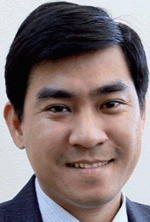The importance of optimal geological zonation and choice of rock parameters in dynamic reservoir simulation: a case study for the Laminaria field
Peter Behrenbruch A , Tuan G. Hoang B C , Khang D. Bui A , Minh Triet Do Huu A and Tony Kennaird AA Bear and Brook Consulting Pty Ltd, 135 Hilda St, Corinda, Qld 4075, Australia.
B 9 Barton Pl, North Adelaide, SA 5006, Australia.
C Corresponding author. Email: tuan.hoang@adelaide.edu.au
The APPEA Journal 58(2) 683-689 https://doi.org/10.1071/AJ17217
Accepted: 9 March 2018 Published: 28 May 2018
Abstract
The Laminaria field, located offshore in the Timor Sea, is one of Australia’s premier oil developments operated for many years by Woodside Energy Ltd. First production was achieved in 1999 using a state-of-the-art floating production storage and offloading vessel, the largest deployed in Australian waters. As is typical, dynamic reservoir simulation was used to predict reservoir performance and forecast production and ultimate recovery. Initial models, using special core analysis (SCAL) laboratory data and pseudos, covered a range of approaches, field and conceptual models. Initial coarser models also used straight-line relative permeability curves. These models were later refined during history matching.
The success of simulation studies depends critically on optimal gridding, particularly vertical definition. An objective of the study presented is to demonstrate the importance of optimal and detailed vertical zonation using Routine Core Analysis data and a range of Hydraulic Flow Zone Unit models. In this regard, the performance of a fine-scale model is compared with three alternative, more traditional and coarse models. Secondly the choice of SCAL rock parameters may also have a significant impact, particularly relative permeability. This paper discusses the use of the more recently developed Carman-Kozeny based SCAL models, the Modified Carman-Kozeny Purcell (MCKP) model for capillary pressure and the 2-phase Modified Carman-Kozeny (2p-MCK) model for relative permeability. These models compare favourably with industry standard approaches, the use of Leverett J-functions for capillary pressure and the Modified Brooks-Corey model for relative permeability. The benefit of the MCK-based models is that they have better functionality and far better adherence to actual laboratory data.
Keywords: hydraulic flow zone unit, relative permeability, reservoir simulation.

Peter Behrenbruch is currently an independent consultant with 44 years of industry experience. Commencing his career in Canada in the early ’70s, Peter worked for Shell in Europe in the late ’70s before migrating to Australia to work for Woodside in the early ‘80s, where he was involved in implementing the initial phase of the North West Shelf (LNG) development. He subsequently worked for BHP Billiton for 16 years, where he was involved in many Timor Sea developments and other Australian offshore projects. He was project manager for the Skua and Griffin developments (feasibility stage), as well as worldwide operations, including the Deepwater Gulf of Mexico, North Sea and Vietnam. His next major engagement was in academia, where he started the School of Petroleum Engineering and Management at the University of Adelaide in 2001 (with a $25 million grant by Santos), and as inaugural Head of School, Peter saw the first students graduate in 2005. He subsequently re-joined the industry in 2007 and was responsible as project director and COO for establishing first production from the Puffin field, Timor Sea (AED Oil and SINOPEC). Over the last few years, Peter has established Bear and Brook Consulting, where he is engaged in consulting, teaching of university and industry courses and research and development activities in the area of special core analysis. |

Tuan (Ti) Hoang has been working for Bear and Brook Consulting since July 2015. Just before his employment, he completed his undergraduate degree in Engineering Science at the University of Western Australia. In 2016, he completed a 3-month vacation work program with Rosneft Vietnam. Currently, he is completing a master by research degree in Petroleum Engineering at the University of Adelaide. |

Khang (Kevin) D Bui has been employed as a Reservoir Engineer by Bear and Brook (B and B) Consulting on a full-time basis since March 2016 after graduating from the University of Adelaide in Petroleum Engineering, having taken the first two years of his degree at the Ho Chi Minh City University of Technology as part of an articulation program. Currently, he is studying for a Master’s degree in Information Technology at the Queensland University of Technology and is working part time for B and B. |

Minh Triet (Phil) Do Huu has been employed as a Principal Reservoir Engineer by Bear and Brook Consulting since early 2014, for three years on a full-time basis and now on a part time basis while taking up further studies. Since 2015, Phil has been responsible for computer programming of new methodologies for the development of a comprehensive, integrated core data modelling system. He commenced his career in Vietnam after taking postgraduate work at the University of Adelaide in Petroleum Engineering, first teaching (2006–2007) at the Ho Chi Minh City University of Technology and subsequently working as a Senior Petroleum Engineer (2008–2014) at Cuu Long, a Joint Operating Co. between Petrovietnam and foreign parties. |

Tony Kennaird is currently an independent consultant and an Associate Advisor of Bear and Brook Consulting since he retired from Core Laboratories in 2016 after a carrier of 40 years. He managed/supervised laboratories in six locations: London, Singapore, Kuala Lumpur, Jakarta, Perth and Ho Chi Minh City. His involvement in research and design of laboratory procedures/equipment has led to publication/presentation of more than 40 technical papers, industry talks, technical notes and articles. He has taught the use of laboratory instrumentation to purchasers of CoreLab throughout Asia and the Middle East. Tony also lectured to the industry, giving courses and seminars in 18 countries throughout the Asia-Pacific region. He was Chairman of CoreLab’s worldwide Core Analysis Development Committee from 2005–2008 and led the CoreLab Australia group in achieving ISO-9001 status. Tony has been seconded as a direct consultant to many clients on subjects as diverse as reserves estimation and formation damage. |
References
Behrenbruch, P., and Goda, H. M. (2006). Two-phase relative permeability prediction: a comparison of the Brooks-Corey methodology with a new Carman-Kozeny based flow formulation. In ‘SPE 101150, APOGCE, Adelaide, Australia, 11–13 September 2006’.Behrenbruch, P., Do Huu, M. T., Yuan, C., Truong, N. B., and Hoang, T. (2016a). Defining irreducible water saturation using global characteristics envelopes and novel correlations. The APPEA Journal 56, 1–10.
| Defining irreducible water saturation using global characteristics envelopes and novel correlations.Crossref | GoogleScholarGoogle Scholar |
Behrenbruch, P., Do Huu, M. T., Bui, K. D., and Hoang, T. G. (2016b). Modelling of drainage capillary pressure: using the modified Carman-Kozeny Purcell model to identify the type of pore throat distribution inherent in laboratory data. In ‘SPE 182457, APOGCE, Perth, Australia, 25–27 Oct 2016’.
Behrenbruch, P., Do Huu, M. T., Hoang, T. G., and Bui, K. D. (2016c). Modelling of drainage capillary pressure: a comparative study of various analytical capillary pressure formulations in matching laboratory results. In ‘SPE 182469, APOGCE, Perth, Australia, 25–27 Oct 2016’.
Behrenbruch, P., Hoang, T. G., Do Huu, M. T., and Bui, K. D. (2017). Optimal zonation of geological formations and identification of pore structures for sandstone reservoirs, including variation in cementation and fining sequences. In ‘SPE 186951, APOGCE, Jakarta, Indonesia, 17–19 Oct 2017’.
Goda, H., and Behrenbruch, P. (2004). Using a modified Brooks-Corey model to study oil-water relative permeability for diverse pore structures. In ‘SPE 88538, APOGCE, Perth, Australia, 18–20 Oct 2004’.
Goda, H., and Behrenbruch, P. (2011a). A universal formulation for the prediction of capillary pressure. In ‘SPE 147078, ATCE, Denver, USA, 30 Oct – 2 Nov 2011’.
Goda, H., and Behrenbruch, P. (2011b). Wettability quantification: prediction of wettability for Australian formations. In. ‘International Petroleum Technology Conference, Bangkok, Thailand, 15–17 November’.
Hearn, C. L. (1971). Simulation of stratified waterflooding by pseudo relative permeability curves. Society of Petroleum Engineers , .
| Simulation of stratified waterflooding by pseudo relative permeability curves.Crossref | GoogleScholarGoogle Scholar |
Hoang, T., Behrenbruch, P., and Do Huu, P. (2017a). Defining reservoir quality relationships: how important are overburden and Klinkenberg corrections? In. ‘SPG, International Conference on Sedimentology and Petroleum Geology, Sanya, China, 26–28 Feb 2017’.
Hoang, T., Behrenbruch, P., and Do Huu, P. (2017b). Correction of laboratory gas permeability measurements using Klinkenberg type of correction models. The APPEA Journal 57, 171–176.
| Correction of laboratory gas permeability measurements using Klinkenberg type of correction models.Crossref | GoogleScholarGoogle Scholar |
Honarpour, M. M., Cullick, A. S., Saad, N., and Humphreys, N. V. (1995). Effects of rock heterogeneity on relative permeability: implications for scaleup. Society of Petroleum Engineers , .
| Effects of rock heterogeneity on relative permeability: implications for scaleup.Crossref | GoogleScholarGoogle Scholar |


